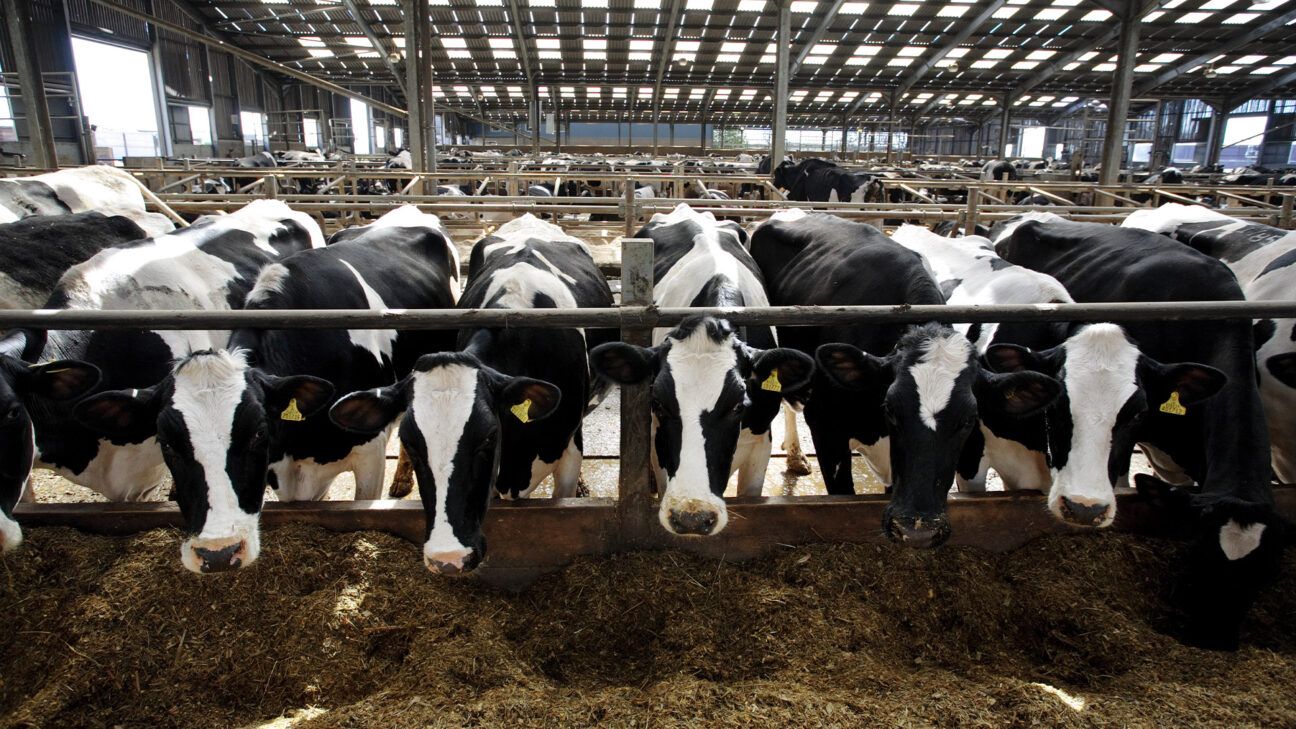
Share on Pinterest
- A new variant of bird flu has been identified in the milk from certain dairy cow herds across the U.S.
- Experts assure that the food supply remains secure, thanks to stringent inspection protocols for cattle and the pasteurization of most dairy products.
- Nevertheless, some specialists are apprehensive about the virus’s potential to spread to humans.
A second variant of the H5N1 bird flu has been detected in dairy cows in the United States.
The United States Department of Agriculture (USDA) has reported that the new strain, named D1.1, was found in the milk of cows from two counties in Nevada. This marks the first appearance of this variant in cattle.
The B3.13 strain of bird flu, which has been primarily found in birds, has affected 950 herds across 16 states and has been linked to a nationwide egg shortage.
Finding the D1.1 variant in cattle raises concerns about the rapid mutation of the bird flu virus.
“It’s evolving and expanding beyond poultry and wild birds; it’s establishing itself in mammals,” stated Beth Thompson, DVM, South Dakota’s state veterinarian, in an interview with Reuters.
Officials maintain that the risk of bird flu transmission to humans is low, although some experts express skepticism.
There are also worries about the possible contamination of the food supply, including meat, milk, and eggs, due to bird flu.
According to
Here’s an overview of the bird flu’s spread and its potential implications for the food supply.
The Centers for Disease Control and Prevention (CDC) have confirmed that 67 people in the U.S. have contracted bird flu during the ongoing outbreak, most of whom were in close contact with dairy cows and poultry.
CDC representatives indicate that most cases of bird flu among these individuals have been mild.
However, bird flu can lead to severe illness. The World Health Organization
A Louisiana man succumbed to the D1.1 variant earlier this year, marking the only fatality in the current U.S. bird flu outbreak.
In November, a Canadian teenager was hospitalized in critical condition due to bird flu but has since recovered.
CDC officials
They
William Schaffner, MD, an infectious disease expert and professor at Vanderbilt University in Tennessee, concurs with the CDC’s evaluation.
“The bird flu virus has not yet developed the ability to easily infect humans or spread from person to person,” he explained to Healthline.
Schaffner pointed out that, so far, no documented cases of person-to-person transmission have occurred in the U.S.
Not all experts share this confidence. One highlighted the notable transmission rate from birds to cattle and from birds to humans.
“The risk of this genotype spilling over from cows to humans is significant. We know there have already been instances of spillover from birds to humans,” stated Abraar Karan, MD, a post-doctorate researcher in infectious diseases at Stanford University in California, in an interview with Healthline.
Karan’s view is supported by Seema Lakdawala, PhD, an influenza virologist at Emory University in Atlanta. “The risk has escalated, particularly in recent months with reports of severe infections,” she mentioned in the journal
Bird flu has been found in certain raw milk products, prompting a voluntary recall in California last November.
However, the virus has not been detected in pasteurized commercial milk products, as experts explain that the pasteurization process
“Pasteurization is proven to deactivate the virus,” stated Karan.
“All pasteurized dairy products (milk, cream, yogurt, cheese, etc.) are safe, as the pasteurization process kills the bird flu virus,” Schaffner added. “However, consuming unpasteurized milk and dairy products poses a risk, so it’s advisable to avoid them.”
Concerns about the safety of beef products have also been raised, but USDA officials assert that the nation’s “stringent meat inspection process” keeps the meat supply secure.
“We haven’t observed direct transmission from beef yet, but I would advise against eating raw beef for the time being, even though consumption has not been shown to be a transmission pathway,” Karan noted.
“No risk has been associated with consuming beef, but it’s always good practice to wash hands thoroughly, clean cutting boards after use, and cook hamburgers to well-done levels,” Schaffner added.
Since January 2022, the
These outbreaks have led to the culling of over 145 million chickens, turkeys, and other birds to control the virus’s spread.
This extensive culling has resulted in a nationwide egg shortage, causing prices to soar.
Despite the emergence of a new strain of H5N1 bird flu in dairy cow herds, experts assure that eggs remain safe for consumption if stored and cooked correctly. The CDC recommends cooking eggs to an internal temperature of 165 degrees to eliminate any risk of the bird flu virus. It’s crucial to ensure thorough cooking before eating.
While government officials assess the risk of bird flu transmission to humans as low, experts advise remaining vigilant as the virus continues to evolve. Thankfully, the nation’s milk supply is secure due to effective pasteurization, which neutralizes the bird flu virus. Additionally, government inspection programs help maintain the safety of the beef supply, although thorough cooking of meat is still recommended.
With proper handling and cooking methods, you can continue to enjoy eggs and other dairy products with confidence. Stay informed, cook your food well, and trust in the safety protocols established to protect our food supply.



